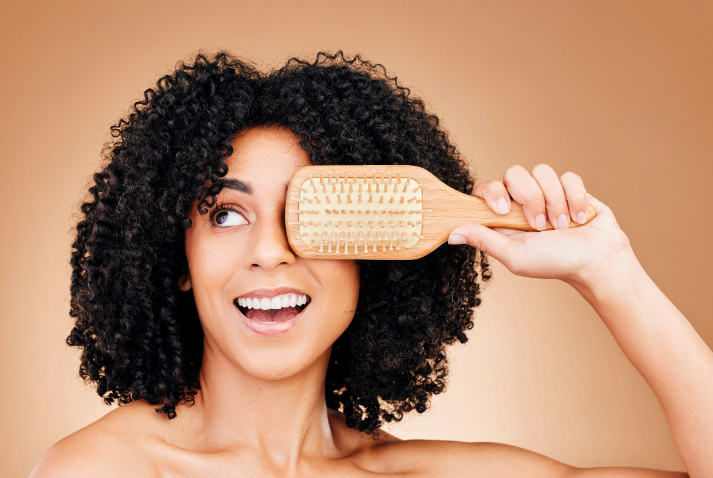Introduction
Collecting hair samples for research purposes can provide valuable insights into genetics, health, and environmental exposure. One common method of obtaining these samples is through brushes. This article explores the guidelines established by Institutional Review Boards (IRBs) for collecting hair samples from brushes, ensuring that researchers adhere to ethical standards and best practices. Understanding these guidelines is essential for researchers to conduct their studies responsibly and ethically.
Understanding IRB Guidelines
What is an IRB?
An Institutional Review Board (IRB) is a committee established to review and approve research involving human subjects. The primary goal of an IRB is to ensure that research is conducted ethically and that participants’ rights and welfare are protected. For studies involving hair sample collection, adherence to IRB guidelines is crucial.
An IRB evaluates the study’s protocol, assesses the risks and benefits to participants, and ensures that informed consent is obtained. It acts as a safeguard to maintain ethical standards in research and provides oversight throughout the study’s duration.
Key IRB Guidelines for Hair Sample Collection
- Informed Consent
- Informed consent is not just a formality; it is a process that ensures participants fully understand what they are agreeing to.
- Privacy and Confidentiality
- Researchers must ensure the privacy of participants by anonymizing hair samples and securely storing data. Identifiable information should be kept separate from sample data to protect participant identities. This helps maintain the confidentiality of participants and fosters trust between researchers and participants.
- Minimizing Risk
- The collection process should be designed to minimize physical and psychological risks. Researchers must assess potential risks associated with the collection process and address any concerns participants may have. Conducting a risk-benefit analysis can help researchers identify and mitigate potential issues.
- Data Management
- Proper data management practices must be implemented. This includes secure storage of samples and data, as well as clearly defining how long samples will be retained and under what conditions they will be disposed of. Researchers should follow relevant data protection laws to ensure compliance and protect participant information.
- Compliance with Local Regulations
- Researchers must comply with local and federal regulations governing human subject research. This includes obtaining any necessary permits for sample collection and handling. It is essential to stay informed about any changes in regulations that may affect the research process.
Steps for Collecting Hair Samples from Brushes
Preparation for Sample Collection
Before collecting hair samples, researchers should prepare by:
- Identifying Participants: Recruit participants based on the research criteria. Ensure diversity in the sample pool to enhance the study’s relevance. Consider factors such as age, gender, and health status to obtain a comprehensive dataset.
- Creating a Protocol: Develop a detailed protocol that outlines the procedures for sample collection, handling, and storage. This protocol should include step-by-step instructions for researchers and staff involved in the process.
Collecting Hair Samples
When collecting hair samples from brushes, follow these steps:
- Explain the Process
- Clearly explain the collection process to participants, ensuring they understand what to expect. Transparency can alleviate anxiety and build trust, making participants more willing to engage.
- Use Clean Brushes
- Use clean, sterile brushes for sample collection to avoid contamination. This step is crucial for maintaining the integrity of the samples.
- Collect Hair Samples
- Collect hair samples by gently brushing the participant’s hair. This method can yield sufficient samples without causing discomfort. It is important to handle the brushes carefully to avoid pulling or damaging the hair.
- Store Samples Properly
- Place collected hair samples in labeled, sealed containers. Store samples in a controlled environment to prevent degradation. This may include refrigeration or maintaining a specific temperature to preserve the quality of the samples.
Maintaining Ethical Standards
- Monitor Participants: After sample collection, researchers should check in with participants to address any concerns or questions. This follow-up can enhance participant experience and increase retention rates for future studies.
- Provide Feedback: Consider providing participants with findings related to their samples, fostering transparency and trust. Sharing results can help participants feel valued and engaged in the research process.
Common Challenges in Hair Sample Collection
Potential Issues
- Participant Reluctance: Some individuals may feel uncomfortable providing hair samples. Address these concerns through open communication and emphasizing the study’s benefits. Providing detailed information about the research’s goals and potential outcomes can help alleviate reluctance.
- Contamination Risks: Contamination can compromise sample integrity. Implement strict protocols to prevent contamination during collection and storage. Regular training sessions for research staff can help ensure everyone understands the importance of maintaining sample integrity.
Solutions to Challenges
- Educate Participants: Provide educational materials that explain the significance of the study and how hair samples will be used. This can include brochures or informational videos that participants can review at their own pace.
- Train Research Staff: Ensure that all staff involved in sample collection are trained in best practices and ethical guidelines. Ongoing training and workshops can help reinforce the importance of ethical standards in research.
Best Practices for Hair Sample Collection
Standard Operating Procedures (SOPs)
Establishing clear Standard Operating Procedures (SOPs) for hair sample collection is essential. SOPs should include:
- Detailed protocols for sample collection, labeling, and storage.
- Safety procedures to protect researchers and participants.
- Emergency protocols for unexpected issues, such as participant withdrawal or adverse reactions.
Quality Control Measures
Implement quality control measures to ensure the reliability of collected samples. This may involve:
- Regular audits of sample collection and handling practices.
- Calibration of equipment used in the collection process.
- Maintaining a log of sample collection activities to track compliance with protocols.
Ethical Considerations
Maintaining ethical standards is paramount in research. Researchers should continually reflect on the implications of their work and strive to uphold the highest ethical standards throughout the study.
- Engage in ongoing ethical training to remain informed about best practices and evolving standards in research ethics.
- Facilitate open discussions about ethical dilemmas and challenges that may arise during the research process.
Conclusion
Collecting hair samples from brushes for research purposes can provide valuable data when conducted ethically and responsibly. By following best practices for sample collection, storage, and data management, researchers can contribute to meaningful scientific advancements while maintaining ethical standards.
In conclusion, the process of collecting hair samples from brushes requires meticulous planning, adherence to ethical guidelines, and a commitment to participant welfare. Researchers who prioritize these elements can enhance the quality of their studies and foster trust within their communities.
Frequently Asked Questions (FAQs)
What is the purpose of collecting hair samples?
Hair samples can provide insights into genetic health, environmental exposure, and personal care products.
What are the risks associated with hair sample collection?
The risks are minimal but may include discomfort or anxiety about participation. Researchers should address these concerns.
How are hair samples stored?
Hair samples should be stored in labeled, sealed containers in a controlled environment to prevent degradation.
Can participants withdraw from the study?
Yes, participants have the right to withdraw at any time without any repercussions.
What happens to the hair samples after the study?
Samples should be disposed of according to established protocols after the research is completed.



